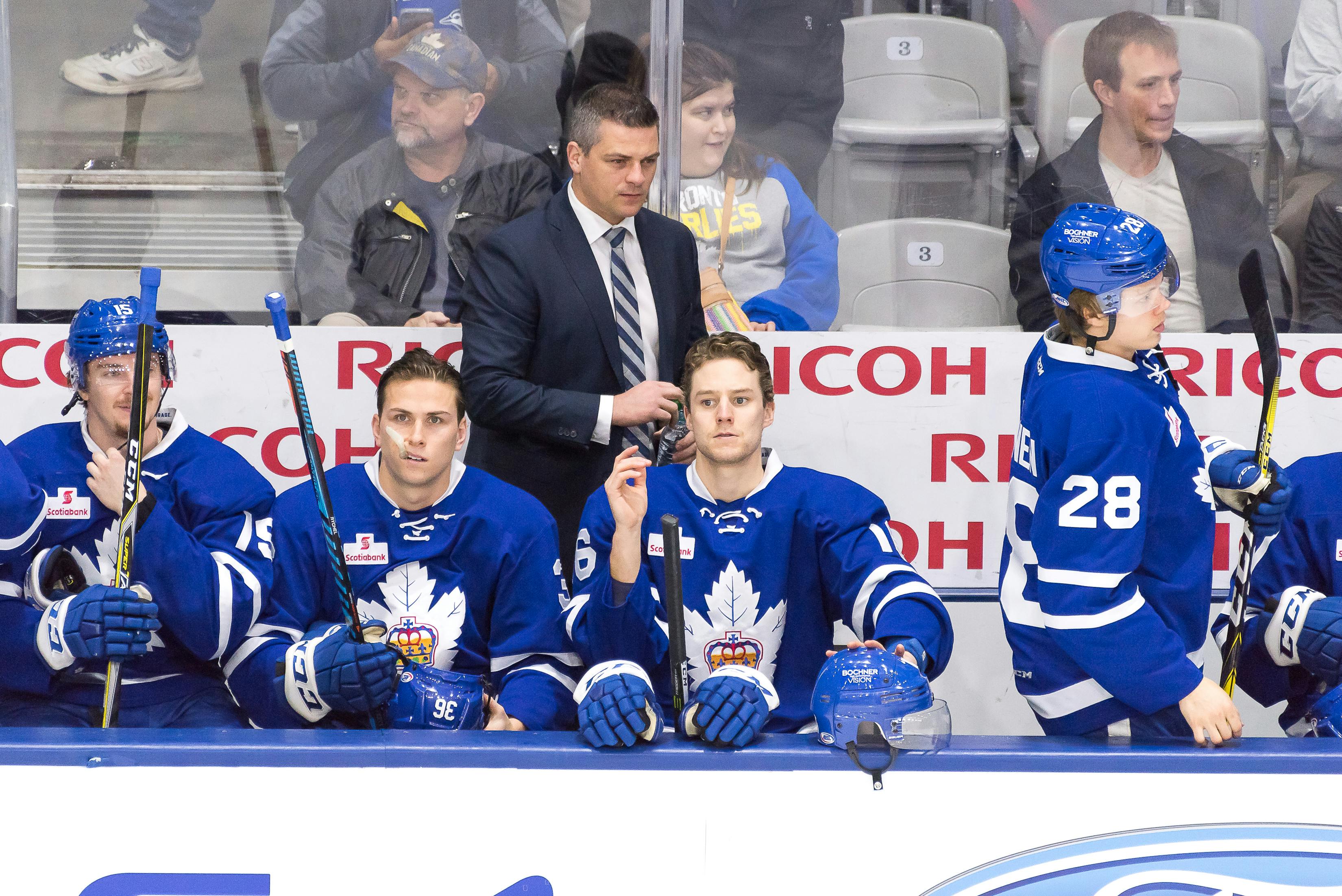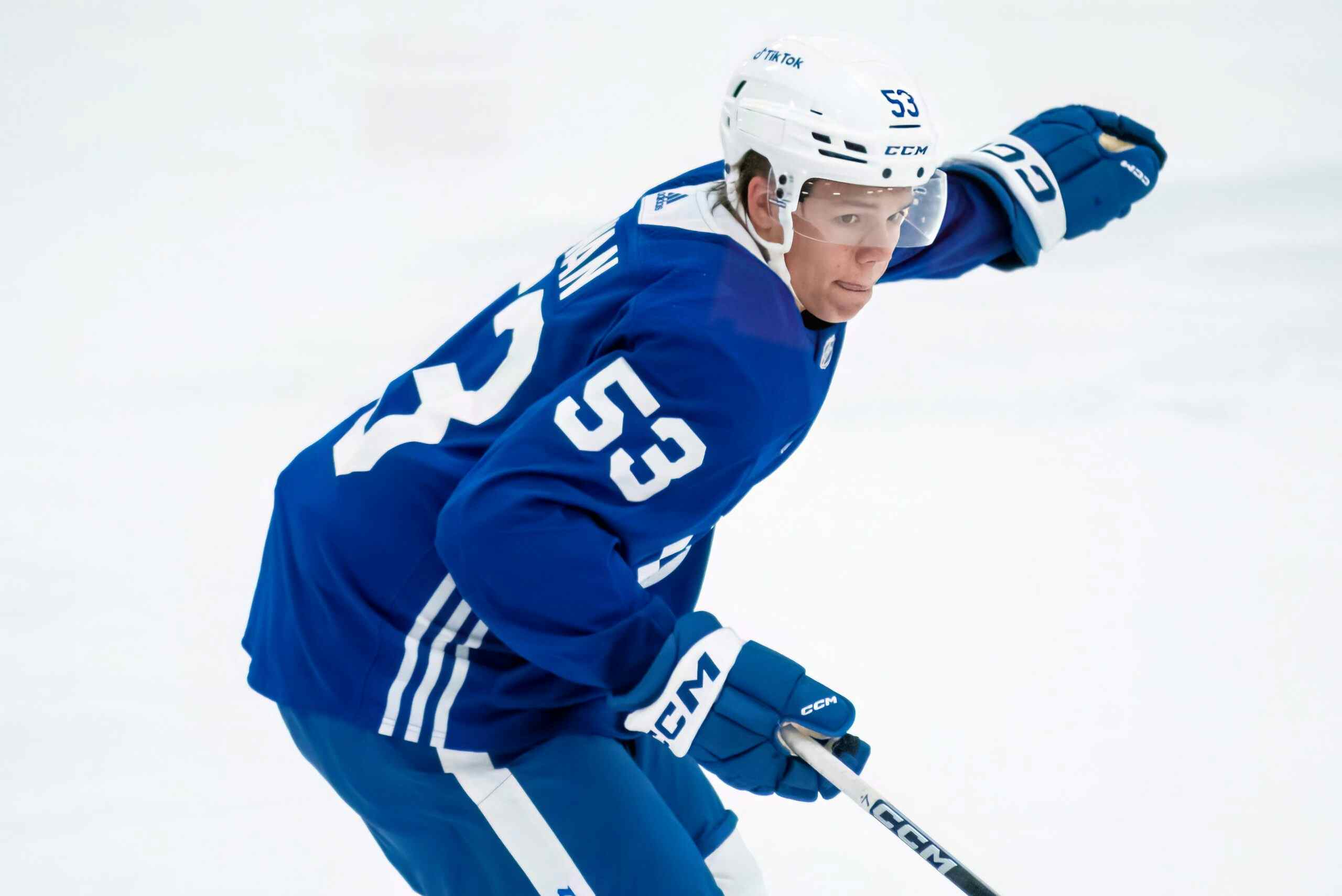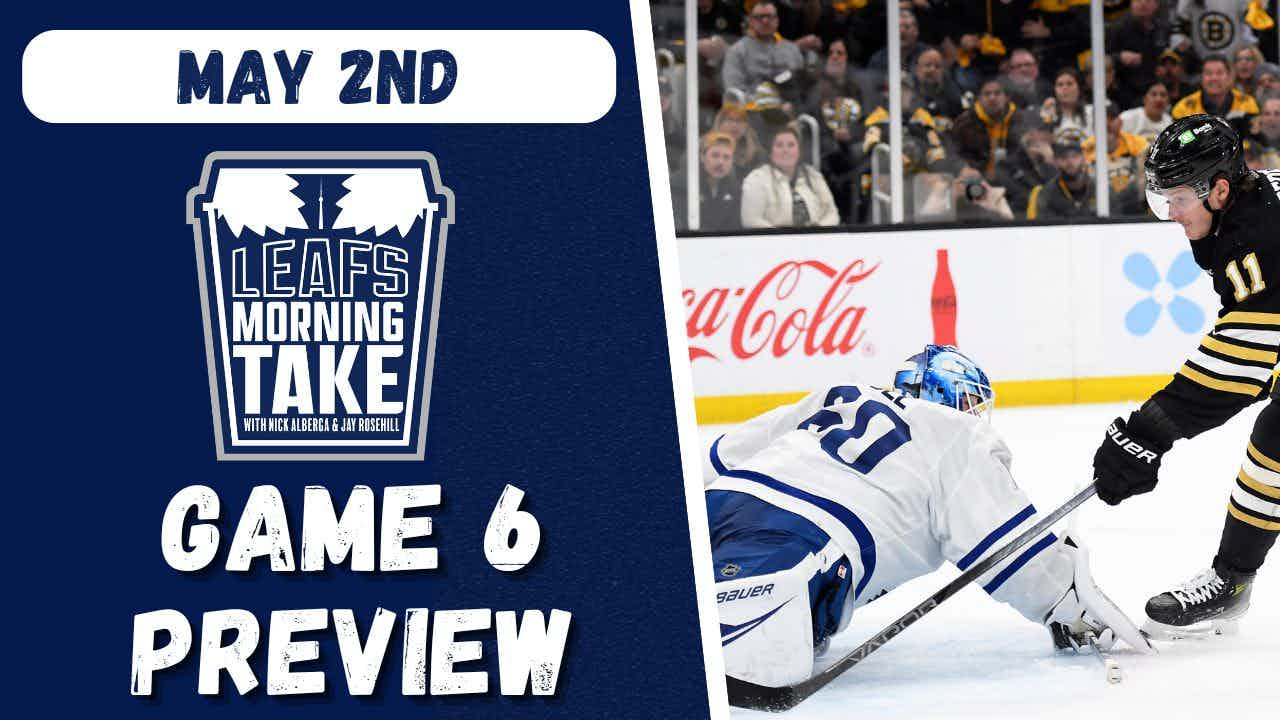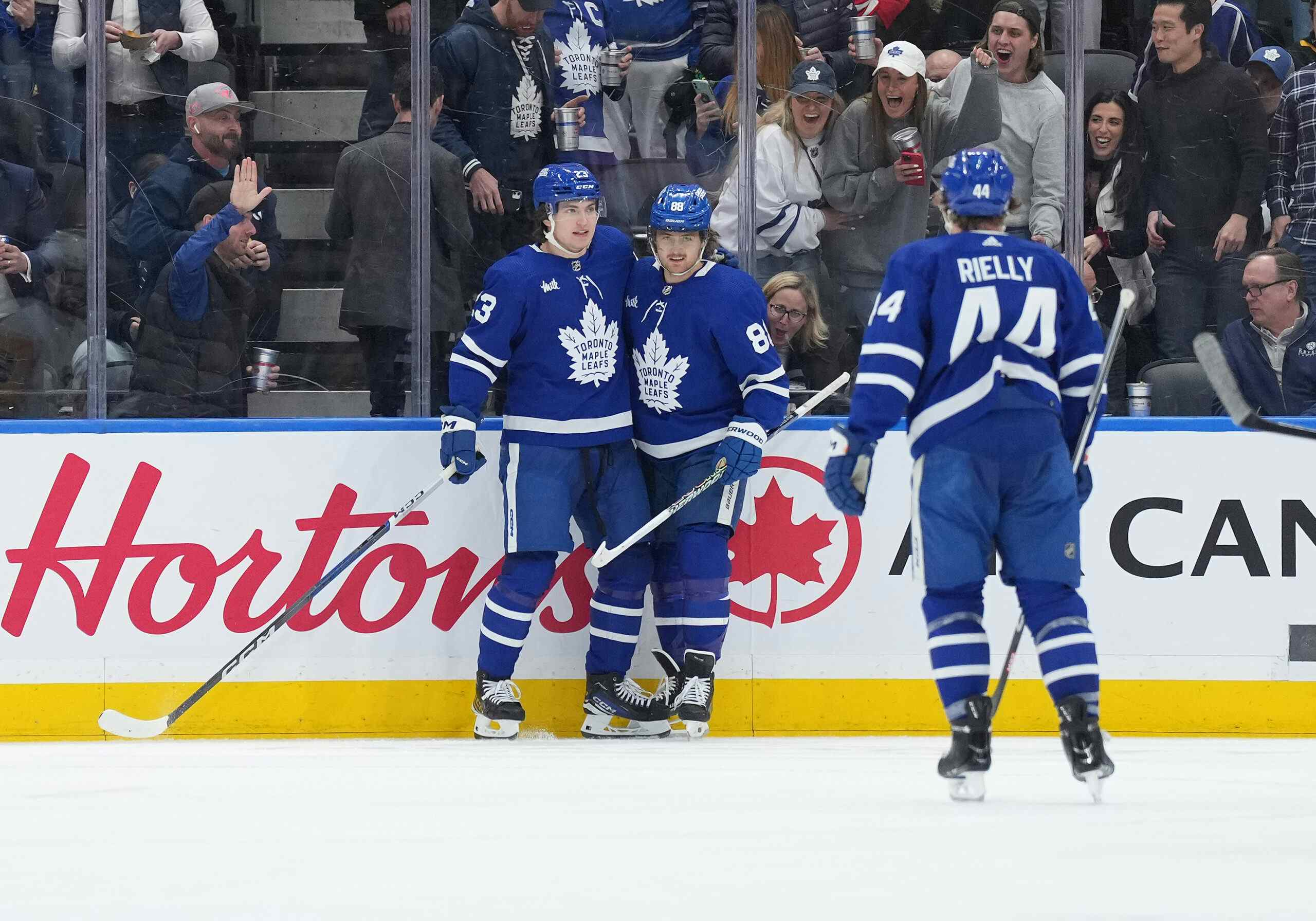No, the Toronto Marlies didn’t have a “Veteran Issue”

Our frenemies over at Pension Plan Puppets had an interesting post a few days ago, looking back at the Toronto Marlies season that was. The core of the post, which you can find here, is as follows.
- Last year’s Marlies had a few veterans, but it was the kids leading the way. William Nylander, Connor Carrick, Josh Leivo, Connor Brown, Zach Hyman, and the rest of the squad did a lot of damage to make them a great team.
- The Marlies this year couldn’t keep up with the Marlies of last year, as evidenced by their drop from one of the best teams in AHL history to a middling team.
- Last year’s team was focused on development, whereas this year’s team plugged the holes by prioritising veterans in the lineup.
- Overall, the Marlies went from the organization’s priority to a team that just happened to be there for the Leafs if need be.
Now, while I can see why one would feel this way at a quick glance, it doesn’t seem to match how either season really went. Here are a few additional things to keep in mind.
The Comeback
The first and most obvious thing to be aware of here is the fact that the Marlies weren’t a 13th overall team from the beginning of the year until the end. On January 15th, just before the mid-way point of the season, Toronto were dead last in the Atlantic Division and 27th overall. We wrote a post on this website titled “Are the Toronto Marlies actually this bad?“. The logic behind it was that the Marlies were a well-performing underlying numbers team with depth on paper, but players were struggling to score at even strength, many were shooting below their career average shooting percentage, and the team had catastrophic luck in close games, fuelled largely by goaltending.
Toronto almost immediately caught fire, winning the next game and going 26-10-2-0 (one point fewer than 2015/16’s 25-9-3-1) in the second half of the season that followed, thanks to stabilized goaltending from Garret Sparks and Kasimir Kaskisuo (Antoine Bibeau continued to struggle and the team went on their last slump of the year when he got extended time) a grocery list of players getting better puck luck, and some crafty personnel decisions.
Is this where the team went young again?
Secretly Older
The short answer is “no”, and the long answer is “not really, they might have gotten older”. Toronto lost Kasperi Kapanen and Brendan Leipsic to injuries almost directly at the half-way point and had to fill the void. While the players noted that an abundance of players was a problem and some hinted at it being a “veteran problem”, Toronto’s most valuable space actually came from losing youth; Kapanen played 23 fewer games in the second half than the first, Leipsic 15 fewer. Rinat Valiev played 21 fewer, while Tobias Lindberg played 26 fewer. The Marlies moved on from Viktor Loov and Colin Smith around the trade deadline; at 23 years old, they’re about as old as I’ll allow a “kid” to be.
Yes, there were veterans who dropped out as the season progressed. We didn’t see a heck of a lot of action from Brooks Laich, Milan Michalek, and Marc-Andre Cliche in the back half of the year, and Byron Froese was shipped out in the Brian Boyle trade, but only after going on a 15 point in 13 game tear to start the second half.
But their departures didn’t exactly make room for youth; they just made room for better veterans to take their place. Cal O’Reilly and Mike Sislo were brought in to replace Froese and Smith, in an effort to get the same combined player traits (a defensively responsible centre, a playmaker, and a powerplay finisher) two slightly differently arranged packages. Sergey Kalinin effectively replaced Laich and Cliche, who only dressed in the same game five times this season when their centre depth was truly tested. Perhaps the biggest benefactor of Michalek’s spot was that it allowed Rich Clune to keep getting reps despite the AHL’s veteran rule, and that it gave 23-year-old, Tony Cameranesi more time to play, though he only had 3 points in 24 games in the second half.
Failed to load video.
A case could be made that acquisition Seth Griffith, prior scratch/Solar Bear Brett Findlay and college signing Trevor Moore all benefitted from additional room as the year progressed, but their gains are probably more from Toronto’s young stars being hurt, rather than their older veterans disappearing. Andreas Johnsson and Dmytro Timashov shot up in the second half as well, but they both saw massive gains in their shooting percentages (Johnsson from 11% to 18.5% and Timashov from 6% to 17.5%) that likely made a bigger dent than an extra few seconds in even strength ice time.
In an attempt to quantify the impact that the team may have had from age, I crunched numbers from two different angles. The first was simple: games played by players who fit the “Veteran Rule”. In the second half, Toronto had 47 more veteran games played, 16 more veteran goals, and nearly a 50% increase in points per game from their veterans. Non-veteran games played dropped, but shooting percentage and production went up.
The other way to do it is to weight the average game, shot, goal, etc by average age at the start of the season. Here’s how that looked:
| Average Age | GP | G | A | PTS | SOG | PIM |
| First Half 2016/17 | 23.26 | 22.52 | 22.61 | 22.58 | 22.75 | 23.41 |
| Second Half 2016/17 | 23.55 | 23.08 | 23.22 | 23.16 | 23.28 | 23.77 |
In short, the Marlies roster that closed out the year with a 0.684 second half (which, in a full season, would be Top-3 in each of the past 11 years), was one that relied even more on veterans; they were just better ones who delivered more. If there’s a case to be made for vets getting out of the way, it’s probably in goal, but even their between-the-pipe performance in the first half was mostly defined by the struggles of 22-year-old Bibeau unless you want to throw the book at three games of Kari Ramo.
Secretly Younger
Let’s use that age-weighting table again, but use it to compare this year’s team to a true fountain of youth: the 2015/16 Toronto Marlies.
| Average Age | GP | G | A | PTS | SOG | PIM |
| Full Season 2016/17 | 23.41 | 22.82 | 22.95 | 22.9 | 23.01 | 23.58 |
| Full Season 2015/16 | 23.08 | 23.18 | 23.06 | 23.1 | 23.08 | 24.55 |
Huh, that doesn’t make a lot of sense. I thought this was an all-in-on-veteran team? They seem to be dressing older players (and by older, I mean still one of the youngest teams in the league), but the actual activity on the ice seems to be coming from younger players for whatever reason?
Well, it’s not too baffling. We can talk about how William Nylander was the perfect storm, AHL-generational prospect as a teenager, but he played exactly half the season, spending the rest of it with the Leafs, the Swedish World Junior team, or on IR with a concussion/appendicitis. Connor Brown only played 34 games with an ankle injury. Kasperi Kapanen only played 44, Connor Carrick showed up late enough that, while he dominated the playoffs, he only played five regular season games. Leipsic and Valiev were the kids who played the most last year, but they were also on this year’s team. Zach Hyman hit 59 games, but he was one of the NHL’s oldest rookies this year (he turns 25 in a few weeks).
Failed to load video.
Toronto’s top two scorers last year were TJ Brennan (26) and Mark Arcobello (27). Matt Frattin (27) played 71 games, sticking around even after being traded. Richard Panik was down there for a while, Clune played more games last year in a bigger role, and guys like David Kolomatis and John Kurtz were players that you’ve likely forgotten about but played decent chunks of the year. Last year’s Marlies were younger than much of the league and had big, yet to be proven names..
| Average Age | 2015/16 | 2016/17 |
| Top 3 Scorers | 24.7 | 21.3 |
| Top 5 Scorers | 23 | 21.4 |
| Top 10 Scorers | 23 | 21.4 |
| Top 15 Scorers | 23.3 | 22.5 |
| Top 20 Scorers | 22.9 | 22.6 |
But they were also surrounded, if not often driven by their veterans. This year’s team led in points by five players aged 21, 22, 21, 23, and 20, and led on defence by a pair of 19-year-olds. The names may be less fresh in your head and come with less hype, but they were the ones leading the way.
All Things Said
I don’t think it’s fair that this team had any sort of consequence for shying away from youth. Their young players were their best player, and the young players who suffered the consequences of playing slightly secondary roles were typically behind their own peers. The veterans they started the year off were probably not the right ones (particularly Laich, who publicly expressed displeasure with his situation, and Michalek, who one could probably assume was the “bad mood” player that Nikita Zaitsev referred to in his Russian interview), but that had less to do with vet/youth balance than it did with the players themselves.
I don’t think it’s fair to point to the promotion/demotion habits of the NHL and AHL clubs when the big club needed next to no help this year compared to last. The 2017 Leafs were incredibly healthy and almost always carried an extra man or two; only ever needing assistance to replace players from their fourth line.
One shouldn’t sit here and say that the Marlies had a perfect season, but I don’t think that how things ended up is reflective of a failure in process, or a team that even really switched gears to turn things around. They managed either find or further cultivate more youth to make up for the handful of semi-full time players they lost from last year, did what they could to get around a lack of depth down the middle as the year progressed, and tactfully brought in a new wave of more experienced players who better suited team needs.
That, combined with a rebound from some awful luck, gave them a final result of two fewer wins from the midway point of the regular season to the last game of the playoffs than last year’s team, and left them with a roster which remains full of prospects with NHL futures (including many who easily could slot into the lineups of various teams come October). Technically speaking, their nucleus is even younger than the group before them, which is impressive given that some are the same players with a year of additional experience.
All things considered, they were dealt different cards, sorted them out well as the months progressed, and didn’t get the end result they wanted because they lost a seven game series to a very good team. I don’t think blaming age or a supposed change in philosophy is the answer here.
Recent articles from Jeff Veillette





